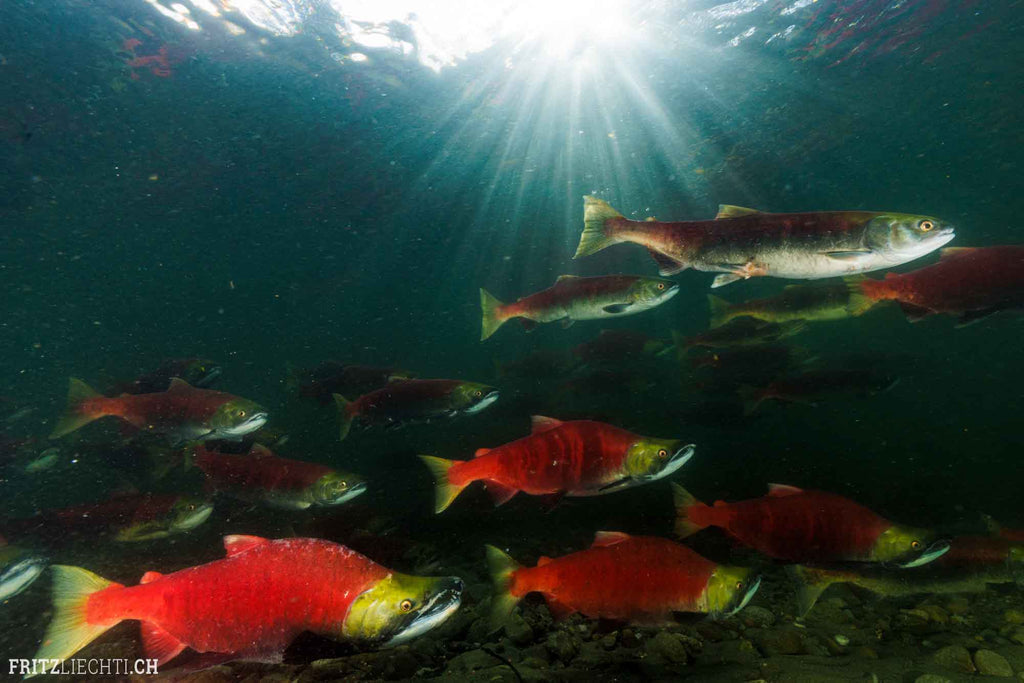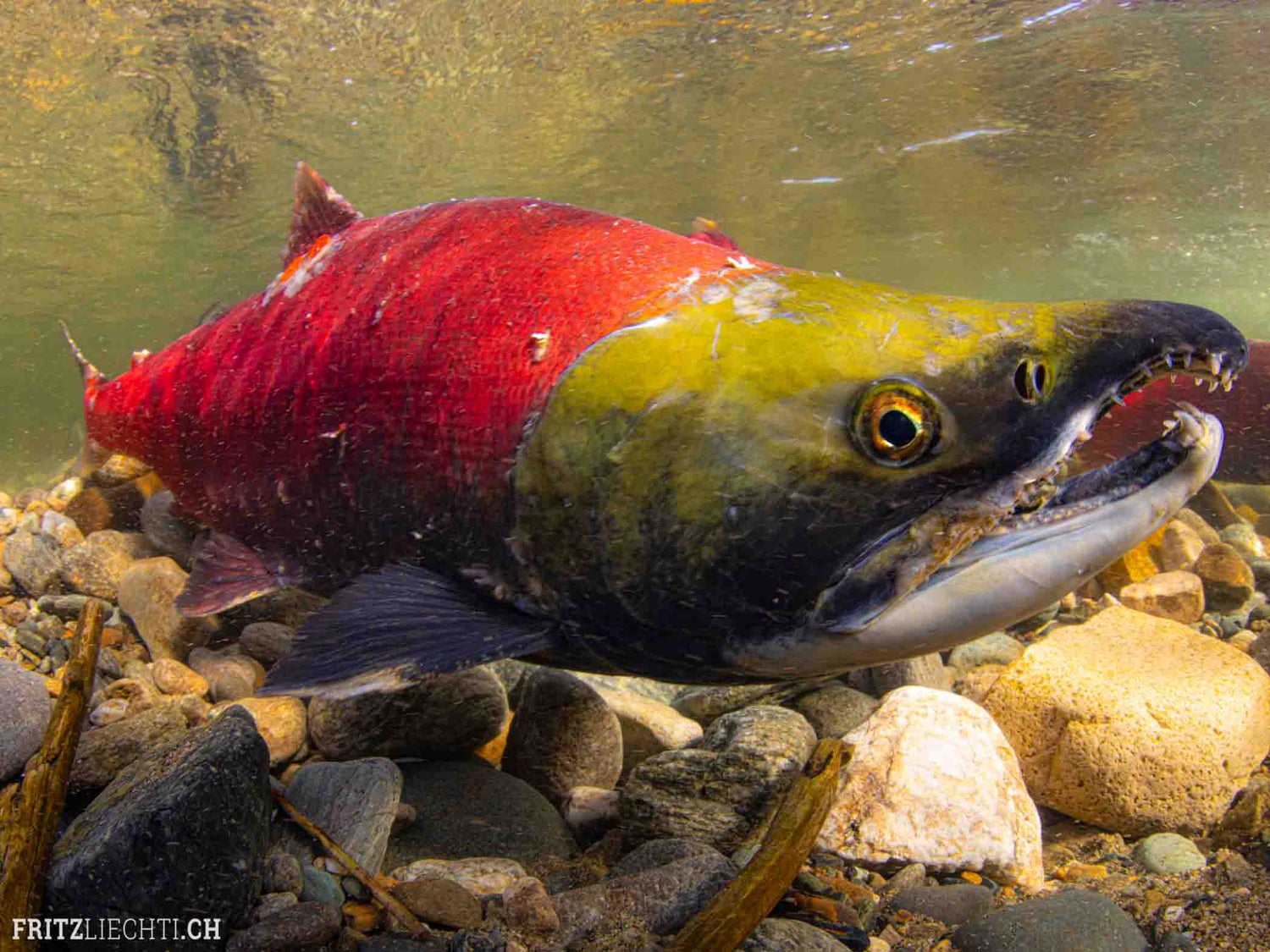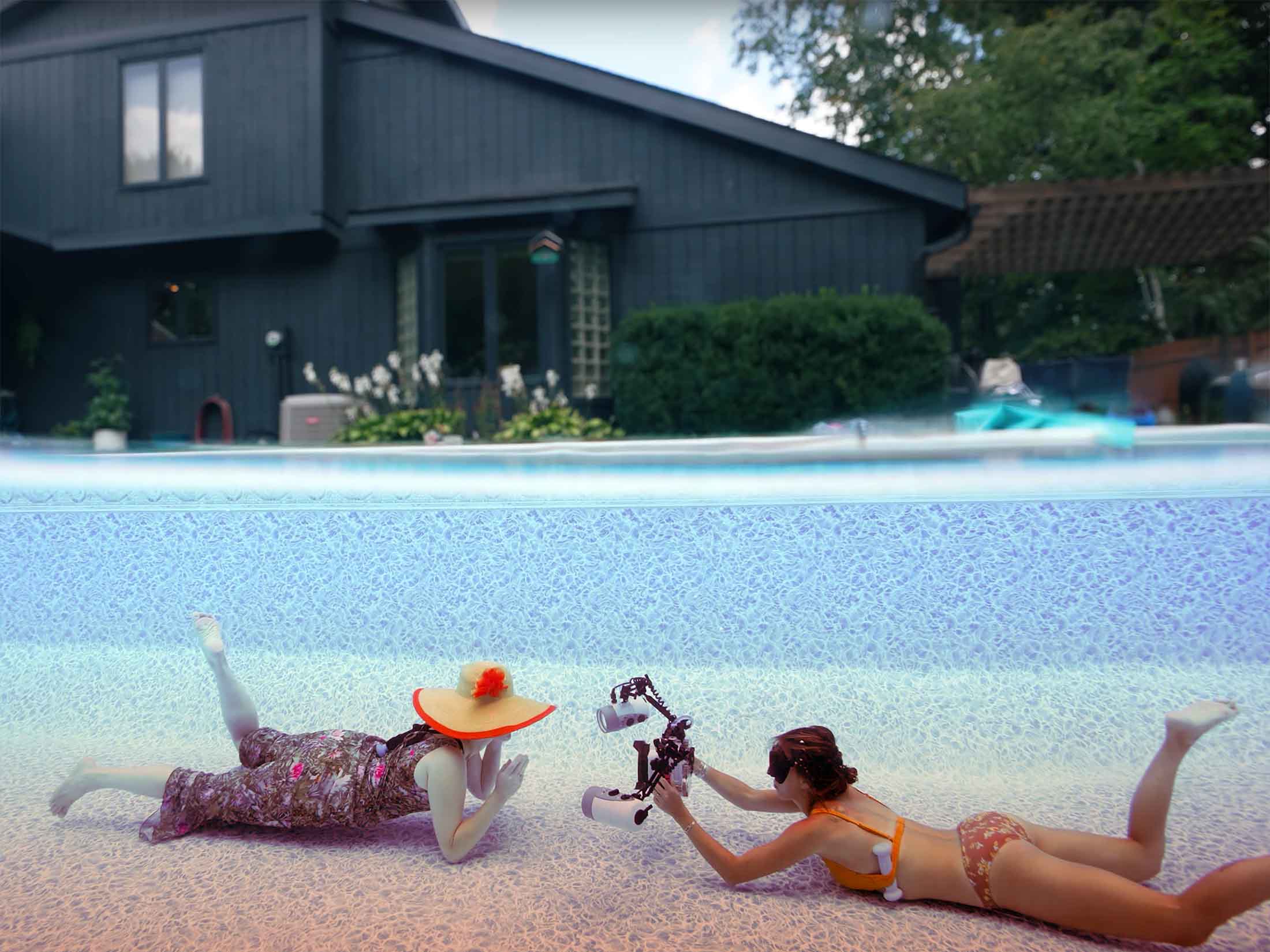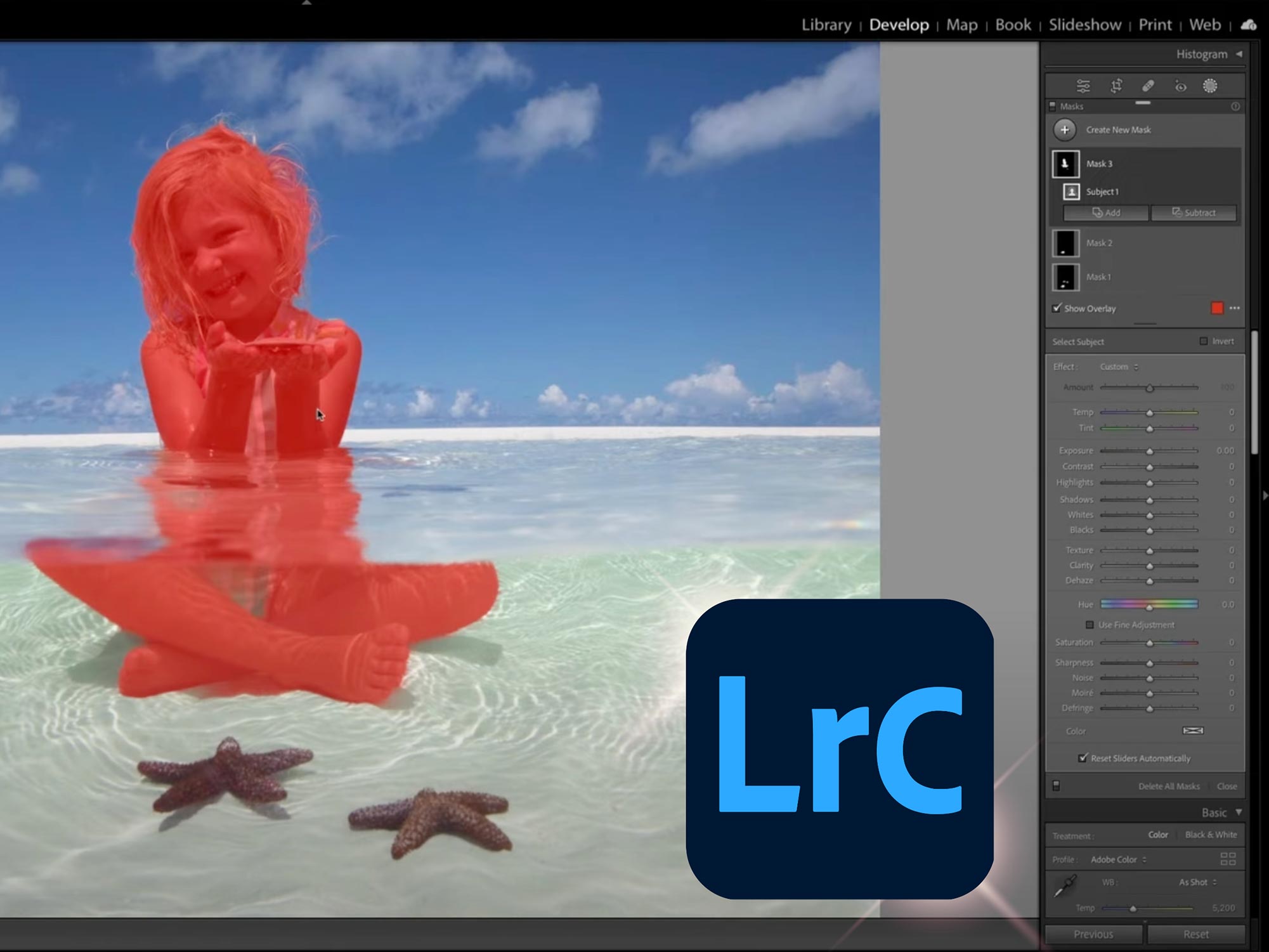Story and Photos by Fritz Liechti
Every year in October a huge amount of salmon migrate to their spawning rivers. With a special permit from the Ministry of Environment / BC Parks we were allowed to document this great event for the media together with some other nature photographers.

Two male sockeye salmon fighting over a female. There is quite a fight going on. The salmon bite each other. With high speed image series, the right moment can be captured thanks to the new DS230 strobes.
One of the biggest Salmon Runs has the Sockeye Salmon moving into the Adams River at Sushwap Lakes near Sorrento. This year a very large run was expected. Due to the lack of rain in August and September and low water levels in the rivers, the Salmon Run was smaller. Nevertheless, about one million sockeye could be counted.

You just have to have the fisheye lens with you when you see the salmon. But I was apparently too big, so these salmon didn't get as far as the Dome and mistook me for a grizzly.
The life cycle of sockeye salmon
In October, the female lays approximately 2200 - 4300 eggs in a spawning pit in the gravel, which are immediately fertilized by the male. The hatched juvenile salmon spend the winter as "alevin" in the gravel and then swim to the Shuswap Lakes as small fish in March. There the sockeye remain for one year. After that the salmon swim during one week up to 1000 km (621 miles) through the Thomson and Frazer River to Vancouver and then into the ocean. For 2-3 years the salmon remain in the ocean. There they eat red krill and small crustaceans. Then in September the journey home begins, the salmon eat nothing more.

The migration of sockeye salmon in the Adams River. In the 3 last weeks of their life, sockeye turn red with an olive colored head.
The journey to spawning takes them back to the Adams River, the place of their birth. In the last weeks the sockeye turn red. In the males, the jaw forms into a beak. The females retain their shape. Pairs are formed. There is also fierce fighting. Males bite competitors for the dream girl, but females are not squeamish either. If another female approaches the chosen prince, she is chased away with bites, if another female approaches the spawning pit, there is war. The females excavate the spawning pit with tail swipes, the males just swim alongside. This looks familiar, the ladies work, the guys watch - emancipation in animal kingdom.

Photographing in the river: Sockeyes with a spawning pit in the foreground. Photographs are taken lying on the stomach on the bank. The current is sometimes very strong, the spawning pit must not be disturbed.
After spawning, the salmon die. It is a heartrending sight to see countless dead salmon on the shore and especially underwater, but this is the cycle of nature. The dead salmon are nutrients for their offspring and for fauna and flora.
Photography in the Adams River
This is hardcore river photography! All the equipment must first be dragged on foot to the approved section of the river. Then, when you're in the water, the current pushes against the housing, the flash keeps getting pushed into the wrong position, the salmon move super fast, and the ambient light kept changing through the trees.

Egg of a sockeye salmon: A new life cycle begins. Photographing with super macro is a challenge in the river. The eggs often swam away before I had camera and proper lighting ready.
But I had a secret weapon - my Canon R5 with two new DS230 strobes from Ikelite! As soon as it came to the fight among salmons, I could shoot a fast series. The new strobes were able to expose the series correctly, so I was able to capture the perfect moment. For years I dreamed of this possibility and used to curse often when I pressed the shutter too late.
The next problem was the many particles (sand, air bubbles, but also parts of dead salmon) in the water. We rarely had sunshine, the water was rather dark in quite a few places. The solution to this was to shoot at high ISO and reduce the strobe output. This way the particles are less illuminated and less dominant in the photo. The shutter speed should be at least 1/160, otherwise the salmon will be out of focus. I photographed most with the 8-15 and 16-35 lenses. Yes, fast series also give large amounts of photos. A fast memory card and a large external hard disk are therefore a must, sorting can then be done at home.

Strobe with snoot: Sockeye female lit with a snoot. That lady did not want to leave me. I just had to make a portrait of her, she was sooo sweet.
Well - simply photographing thousands of red salmon is boring. It needs variations and variety. Therefore I tried long exposure shots with zoom effect, lighting with snoot, super macro - in short, everything that the camera and the equipment dragged there had available.
It was just gigantic fun and joy to be able to be in nature with the salmon. We were witness to an incredible nature experience.

Portrait: Made with long exposure (1s) and moving the zoom-ring. The focus must be in the center on the eye for the effect. I tried it x times until all the settings and the subject were right.
Reflections & Tips
I could not eat salmon for a few days. When you lie in the water and watch a pair of Sockeye for over an hour, how they handle together, chase other salmon, build a spawning pit and then die after spawning, my heart just goes out to them. We are so lucky that we as divers and photographers can experience the wonders of nature directly and up close and do not have to sit on the sofa and watch YouTube.

Half-Half: After two days the rangers from BC Parks came by and checked all our press passes. The people do a great job and work until they drop for the protection and welfare of nature. I preferred the rangers much more than that the grizzlies would have visited me in the water.
Take-Aways
- Be brave, try different settings and techniques - that's the only way you'll get ahead as a photographer.
- Modern cameras allow higher ISO numbers. Shoot with ISO 6000-10000, maybe even without flash to prevent particles. I am a photographer, not an Adobe® Lightroom or Photoshop artist and hate to spend a long time on the computer editing photos and correcting particles.
- Practice above water. Only if you know your camera perfectly, can you use it properly underwater.
- Use the possibility of the “Custom Shooting Mode” of your camera (e.g. Canon C1-C3), so you can program the appropriate settings in advance and call them up quickly and easily for different situations underwater. Nature does not wait until you have set everything correctly!
 Fritz Liechti of Switzerland started diving in 1986 and rarely goes into the water without a camera. He particularly enjoys diving in Switzerland's rivers, especially at night. He travels the world and teaches underwater photography as a CMAS (World Confederation of Underwater Activities) Diving and Underwater Photo Instructor. He has had his work published in several magazines and represented Switzerland in the 2019 CMAS Underwater Photo World Championships. See more of his work at www.fritzliechti.com
Fritz Liechti of Switzerland started diving in 1986 and rarely goes into the water without a camera. He particularly enjoys diving in Switzerland's rivers, especially at night. He travels the world and teaches underwater photography as a CMAS (World Confederation of Underwater Activities) Diving and Underwater Photo Instructor. He has had his work published in several magazines and represented Switzerland in the 2019 CMAS Underwater Photo World Championships. See more of his work at www.fritzliechti.com
Additional Reading
Customer Photos | Fritz Liechti from the Fresh Water of Switzerland
Canon R5 Underwater A-Z // Top 3 Custom Settings for Underwater Use [VIDEO]
Freediving the Orca Trail with the PNW Protectors [VIDEO]
The Wild Coast | Sardine Run, Sharks, and South Africa
Was it Worth Is? Gary Burns on Upgrading to the Canon R5 [VIDEO]













